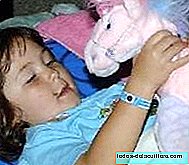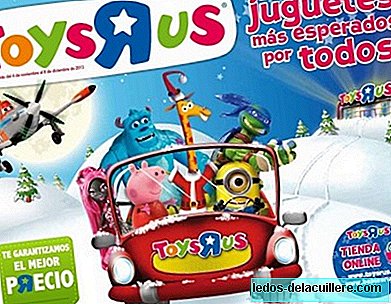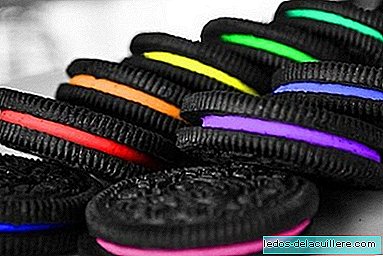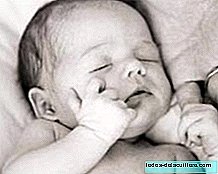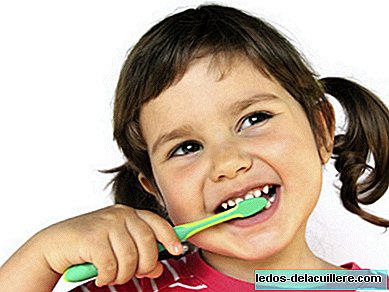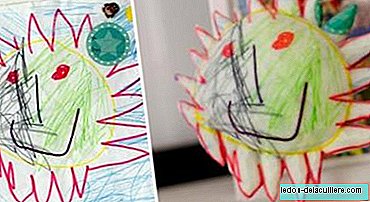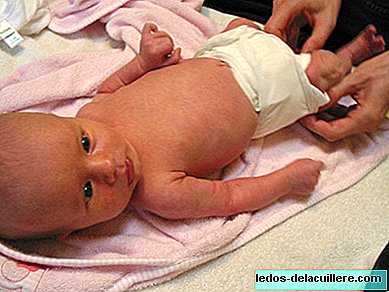Acute diarrhea has received many names throughout history, although today we are left with that of "acute gastroenteritis" or GEA. Gastroenteritis is a disease characterized by inflammation of the gastrointestinal tract that is composed of the stomach and small intestine. In children, most cases are caused by rotavirus. What are the symptoms of gastroenteritis in children?
The main symptoms of gastroenteritis in children are diarrhea, vomiting, abdominal pain and cramping. Let's keep in mind that babies make very soft bowel movements, so they cannot be considered diarrhea if they are not accompanied by other symptoms.
Diarrhea is characterized by feces of less consistency and / or greater number, which may contain mucus and / or blood. The duration is usually less than seven days (usually resolves in three or four days) and never more than 14. However, there are different types of gastroenteritis and symptoms may vary. Next we see different causes, types and symptoms.
Causes of gastroenteritis
As we have advanced, this inflammation and gastric and intestinal dysfunction has a virus as the most frequent cause in children, but let's see all the possible causes, being those of the end of the list rare:
- Virus (mainly Rotavirus, and less frequently, Adenovirus, Calicivirus, Astrovirus ...).
- They can also be bacteria (Salmonella, Campylobacter, Shigella, Aeromonas, Yersinia ...), at certain times of the year and in older children, they are especially relevant in developing countries.
- In addition, gastroenteritis could be caused by parasites (Giardia lamblia).
- Other less frequent causes of diarrhea in children are infections in the first months of life (acute otitis media, urinary tract infections ...).
- Dietary and nutritional causes (intolerance to cow's milk or gluten proteins, improperly introduced new foods, hyperconcentrated, hyper or hypocaloric diets).
- Inflammatory bowel diseases (Crohn's disease, ulcerative colitis).
- Systemic diseases (cystic fibrosis, hyperthyroidism ...).
- Immunodeficiencies
- Tumors (neuroblastoma)
- Toxic (laxatives).
Types of childhood gastroenteritis and symptoms
It is difficult for most parents to distinguish the type of gastroenteritis that the child has, so if we do not observe serious symptoms, we would move on to the next point, to rehydrate and feed the child. And we will go to the pediatrician or the hospital if the symptoms get worse or do not improve over the course of the days, or if we talk about a baby younger than six months.
Let's see different types of diarrhea in children According to an article on the treatment of acute gastroenteritis.
Secretory diarrhea (caused by food poisoning or certain bacteria): the damage is located in the small intestine, stools are liquid, watery, with significant loss of water and electrolytes. Diarrhea may persist despite fasting.
Invasive or inflammatory diarrhea (for bacteria such as salmonella ...): diarrhea is usually with mucus and blood, with fever and alteration of the general condition.   * Penetrating or systemic diarrhea: clinically they have fever, poor general condition, leukopenia (decrease in the number of leukocytes in the blood) and stool with mucus or blood. The most characteristic example is typhoid fever.
Diarrhea due to impaired function or osmotic mechanism (rotavirus and adenovirus): are produced by alterations of absorption and transport mechanisms in the enteritos, the epithelial cells of the intestine responsible for these functions. The stools are liquid and sometimes acidic, due to the presence of non-absorbed sugars.
Diarrhea due to decreased absorption area (due to Giardia lamblia parasite, very rare). It can cause chronic diarrhea with malabsorption and sometimes present as acute diarrhea with foamy, foul and greasy stools, along with anorexia and abdominal discomfort.
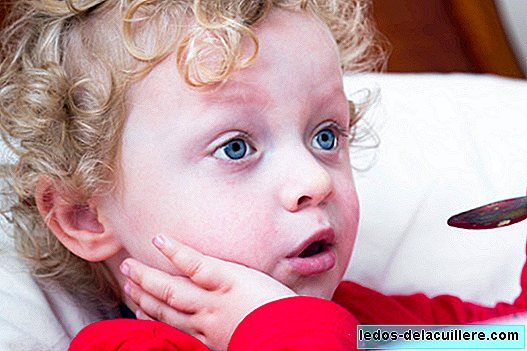
What the child with gastroenteritis should eat
As we have pointed out, in our environment, gastroenteritis is usually caused by viruses or bacteria and is not serious if treated, rehydrated and fed the child. The best food if there is gastroenteritis is one that regenerates the intestinal mucosa and replenishes all the necessary nutrients that have been lost with the massive evacuation of fluids.
The European Society of Pediatric Gastroenterology, Hepatology and Nutrition (ESPGHAN) establishes that the child should be given an early feeding, restarting a diet suitable for age, without restrictions, as soon as dehydration is corrected, which is the main thing.
That is, first of all for childhood gastroenteritis good oral rehydration is important, since the greatest danger of this disease lies in dehydration from the loss of body fluids. Oral rehydration solutions are the treatment of choice to replace water and electrolyte losses caused by diarrhea in children with mild or moderate dehydration.
If it is breastfed babies, breastfeeding should not be suspended and you have to offer them more shots. In the case of formula feeding, dilution or the use of special formulas (lactose free, hydrolyzed ...) is not recommended.
Appetizing foods for children, such as slow-absorbing carbohydrates (pastes), should be offered and not forced to take what they do not like or feel like. At first, lean meats, fish, dairy and fruits, very fatty foods (fried), very sweet (juices), with low nutritional level (candies, cakes, etc.) or those foods with laxative power (plums, kiwifruit ...) should be avoided .
In short, if you observe symptoms of gastroenteritis in children, remember that the treatment is based on three pillars: a correct state of hydration, an early feeding and avoiding antibiotics and drugs against diarrhea or vomiting.
Photos | iStock
In Babies and more | In case of diarrhea forget the soft diet of a lifetime


